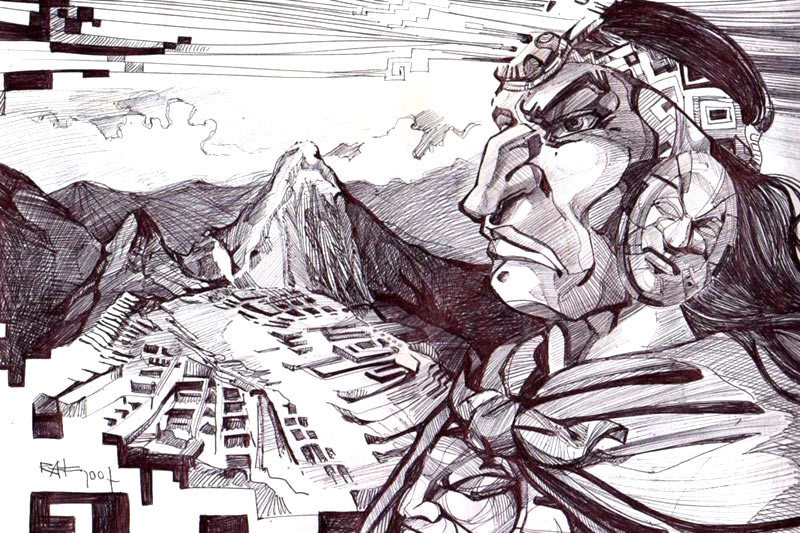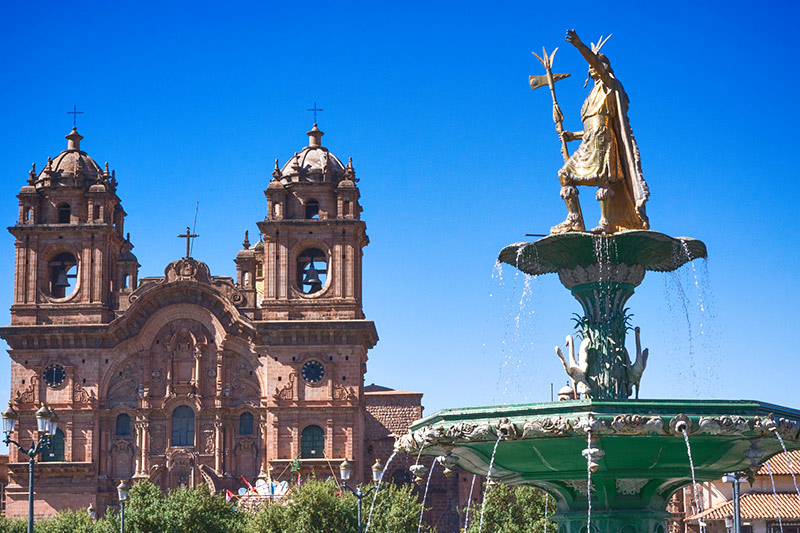The Inca or the son of the Sun
The Inca was considered a sacred being, who directly came from the world of the gods. In this case he was the son of the Sun, since the Sun was the highest deity in all the conquered territory and known as the Tawantinsuyo. This empire that managed to expand through a large part of present-day South America. As a maximum, representing the State, he had in his domain the population, the agriculture of the area and everyone had to obey the orders that he gave. Learn more about this imposing lineage that managed to forge a rather extensive empire in rugged and difficult terrain.

The son of the Sun
The Inti or Sun god
The highest deity of all the gods was the Inti or sun. The entire population of Tawantinsuyo had to participate in the shrines. The way of worship involved all the people of an ayllu in massive and complex ceremonies. At the same time they were accompanied by dancers and music, in this way, the rites took long hours. During the celebrations to Inti and the rest of the gods, animal offerings were also made, mostly llamas. In some cases offerings of human lives were made, the best known being the capacochas.
The Inca empire was based on an economic system that was expressed in agriculture. The domain was given control of land was precisely to generate spaces and farmland. A large part of these lands were used exclusively for ceremonies and in gratitude to the Sun god or Inti who, as we have already mentioned, was the supreme deity. Proof of this eminent position is that in all the most important enclosures of the Tawantinsuyo, there was a temple dedicated exclusively to him. The most magnificent and spectacular being the one found in Cusco, the Coricancha.
Cusco was the capital of the entire Tawantinsuyo, in this temple you could find gold plates that covered all the walls of the enclosure. The representation they made to the Inti was a huge piece of gold inlaid with precious metals. Every dawn this figure received the sun’s rays and the glow spread throughout the temple. After the conquest, all metals such as gold and silver were melted down and taken to Spain.
Regarding Inca mythology, the Inti or Sun, was considered the highest deity because he was considered the god of life. The rays of the sun are capable of giving life, especially when it comes to agriculture. So the sun was important to get food and thus the entire population can maintain itself. This god sent his children so that he can protect all people. The main representative would be the Inca considered as a deity among mortals.
The Inca or son of the Sun
The person in charge of representing the highest deity in the underworld was the Inca, who was the highest figure and representative of the entire State that governed Tawantinsuyo. The Inca was in charge of directing the war campaigns or choosing his generals for said functions. He was also in charge of guaranteeing and guarding that the assets were handled properly.
The system for distributing the assets of the entire Tawantinsuyo consisted of making a tripartition. That is, 3 distributions of goods were generated. One third of the goods or the harvest obtained was directed to the Inca, the second third was destined for ceremonies and the worship of the Sun and other deities. The last third remained in the community colcas.
In some cases the distribution could vary according to the wealth obtained. Private possession only had power in the domains of the Inca. In this way, their assets were administered in their panaca or royal family. Being the lineage, the most important bond to understand the members of the entire panaca. They were also in charge of sending a portion of food to the curacas and orejones.
He was considered a sacred being, he was always carried on a litter during special ceremonies such as Inti Raymi. It is said that the gratitude of the people was so great that when they saw him go by, they gave him fruits, flowers or some other product as an offering. Upon his death, he was mummified so that they would continue to be worshiped as a sovereign both in this life and the next.
The Inca can be compared to a European king, only with more power when considered as a direct son of the highest divinity of Tawantinsuyo. In this sense, the choice of the new Inca or the successor began after his education. The eldest son was considered the favorite for successor, but that was not all. All the children of the Inca could compete in a series of tests, where the gods would be in charge of choosing the new son of the Sun. Rain being the main key to understanding the desire of the gods.
During the last governments, the Incas chose their successor from among their favorite sons or whom they saw capable of further expanding the territory of the Tawantinsuyo. This election began with Huiracocha Inca who put Inca Urco on the throne, who over time was overshadowed by the exploits of Cusi Yupanqui, who would later be known as the Inca Pachacútec who is credited with the feat of destroying the chancas.
The elite of the entire Tawantinsuyo was divided into two zones with different functions. The Hanan Cusco and the Hurin Cusco, these two panacas, disputed the government or sovereignty. However, they were consolidated during the government of Inca Roca, who intervened. Placing the Hanan dynasty as possible monarchs, in charge of the political and military; while the Hurín would be in charge of the religious domain and the secular order.

Representation of the Inca – Main square of Cusco
Sometimes the name Inca is confused to designate both the rulers of the Tawantinsuyo and to name the common people or hatunruna of the empire. This nomenclature error is very confusing to those who are not dedicated to historical or anthropological studies. The Incas belonged to royal families, they were the earthly representation of the Sun or Inti, the highest divinity in Inca mythology. While the hatunruna, they served as labor force and as infantry for the State.
The Hatunruna
The hatunruna or “common people”, were the people who owed homage to the Inca. All the free settlers had to follow all the ceremonies in honor of the god Inti and the Inca himself. The way to pay taxes was done by work in agriculture or construction. They were organized in ayllus, a community of several families that descended from the same ancestor, some of these ayllus had their own deity.
The general population was recorded in a special measurement system known as the quipus. Here, harvests, births, deaths, and even marriages could be recorded. It was also possible to find the number of soldiers for the army, the number of farmers and builders. All hatunruna had the duty to work for the State, from a certain age.
The state organized the life of the population from the moment of its birth. At the time of compulsory marriage, a place was set for future families to live and bring a boy or girl into the world. The children did tasks according to their age and sex. Marriages were massive between young men of 20 and young ladies of approximately 16 years. The State was in charge of giving them land and two flames at the time of the marriage.
These ayllus fostered safe spaces for the whole family, that is, having all the same lineage supported each other in a better way. It was also important because the support existed, in case there were orphaned children, widows or the elderly. The men rotated their roles as farmers, soldiers, or builders. Women in some cases could be chosen and taken to the Temple of the Sun, being the only ones who could make the Inca’s clothes, food and drinks.
By Ticket Machu Picchu – Last updated, August 15, 2024